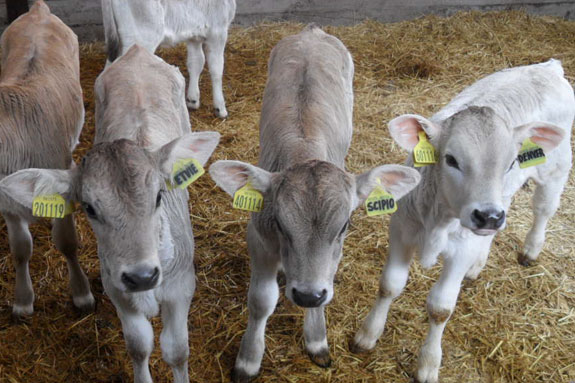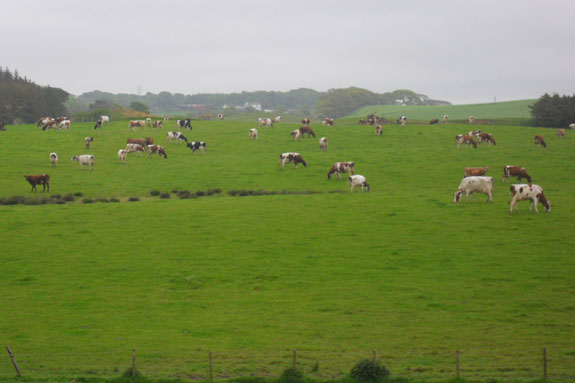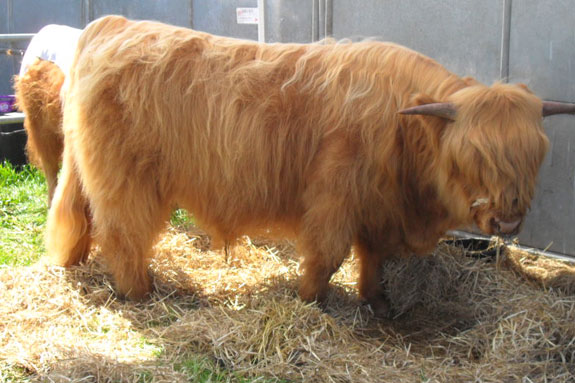The emerging depiction of the current state of the dairy industry in the U.S. is becoming an ever-changing reality for large and small dairy farms across the country. The outcome is uncertain and tends to be rather intimidating to those who try to predict the future of our dairy industry.
However, after a recent visit to Scotland with the University of Kentucky Dairy Club , and an ongoing internship with Alltech , I have worked to overcome the intimidation and have obtained a better understanding of what the dairy industry in the US could potentially look like in the next five years.
Having been born and raised on a dairy farm, gone to the University of Kentucky to study Agricultural Economics (to try and learn how to actually make money in the dairy industry), as well as research projects regarding dairy enterprises, I feel the trip to Scotland was the pinnacle of my college career. The purpose of the trip was to bring back information from farms visited as well as numerous presentations given by animal scientists, PhD students, and research colleges across various parts of Scotland.

How can we as dairy farmers and future dairy farmers utilize this information? It’s simple! We see successes and failures in other parts of the world as lessons learned and do our best to implement these lessons in the very cyclical milk market that we all depend so heavily on.
One major consideration we as farmers make in the U.S. is milk components. We get premiums for the content of our milk, one of these being a low SCC. Today in the U.S., milk can be accepted with a somatic cell count (SCC) of 750,000 cells/ml. In Scotland, the maximum SCC accepted is 400,000. The standards set leave dairy farmers no choice but to be excellent managers of herd health.
One farm we visited had a 400-cow Holstein herd bedded on sand; they rarely saw a SCC greater than 100,000. One of the reasons for this was the farmer’s use of sand. Since sand is an inorganic material, it makes it one of the preferred beddings to maximize milk quality.
The bedding of the animals is just one of the many aspects of cow comfort and animal well-being that the public has begun to show interest in. Some may see this as a nuisance or as being unnecessary, but why? This gives dairy farmers the opportunity to spread the word of our management skills to a group of people that most likely wouldn’t have listened five years ago. But those same people are the consumers buying our products.
Scottish farms and some U.S. farms are starting to move toward complete indoor systems with limited grazing. New data is being collected through multiple research projects, some which were using Ice Tags from a company called IceRobotics , measuring the lying time of dairy cattle. This data along with other data from similar technologies will hopefully help us to answer the overlooked age old question. How comfortable are our cows? 
Along with cow comfort, greenhouse gas emissions also seems to be quite a hot topic throughout the world where going “green” is becoming more and more popular. Fingers are being pointed at the dairy industry for the gases our cows emit. Recent studies have proven, as shown in the May 21 issue of Progressive Dairyman, excluding meat production, only 2.7 percent of global greenhouse emissions originate in the dairy sector.
Scotland is currently facing similar issues and could possibly be seeing emission quotas or regulations in their future, as is the U.S. One college in particular, the Scottish Agricultural College, is working toward research projects measuring the amount of gases emitted. Contrary to what most people believe, approximately 95 percent of the gases emitted by the cow come out of its mouth rather than through fecal matter.
With a large amount of focus on emissions, and meeting customers’ requests, organic dairying seemed to be relatively popular in Scotland. However after some discussion we found that organic milk is only 3-4 percent of total milk, making them not much larger than the U.S.
Premiums have progressively decreased due to oversupply of organic milk and the regulations to get into and stay certified organic are substantially less than here in the U.S. The focus on organic in the U.S. has also seemed to decrease, but not so much as a result of oversupply, as it is the shift towards consumer support of locally produced products as well as the current state of our economy.
Many farmers are using the locally produced label as a way to connect with the customers that are purchasing their products. By reaching the consumers on a personal level it allows the consumers to understand the means in which the milk was produced. My father has always told me “each generation is one generation further away from agriculture.” The truth of this statement is substantial, and farmers are doing what they can to diminish this ongoing trend.
Other ways we have found to meet consumer needs include focusing a little more on animal well-being, hosting families on our farms, changing labeling, reforming some farming practices, as well adapting to any other changes that come our way. Farmers are excellent managers and have found ways to meet the needs of everyone, from cows to consumers.

According to the National Cattleman’s Beef Association , in 1960 one farmer could feed 25 people, that same farmer today can feed almost 130 people. Farmers have been utilizing new research and technology to help improve the lives of their animals as well as their productivity.
Through the use of natural supplements, some farmers have found that they can improve all the critical components of a dairy herd, such as emissions, estrus detection, calving, recovery, production and breeding.
Scotland has proven to be very innovative in the way they have tackled issues that have surfaced over the last 10 years. However, the U.S has also been a leader at the forefront of technological innovations on dairies.
It is important that we as farmers utilize our fellow herdsman, researchers and businesses and take lessons from others' experiences, whether it be neighbor to neighbor or even country to country. PD
Elizabeth Chaney will be a senior at the University of Kentucky and is a marketing intern at Alltech this summer.



